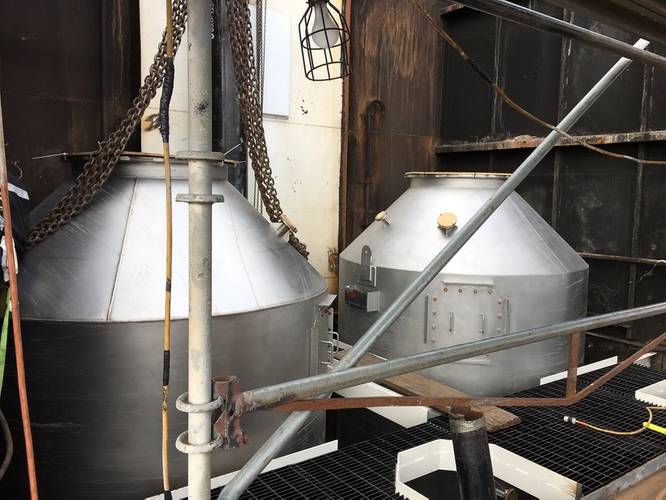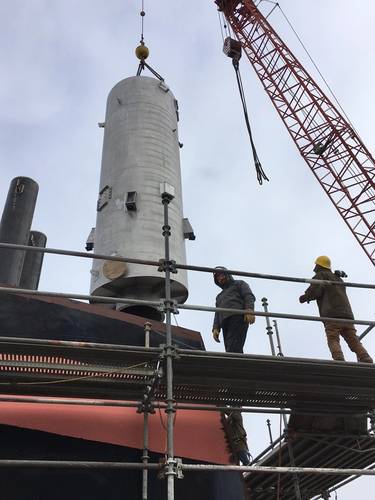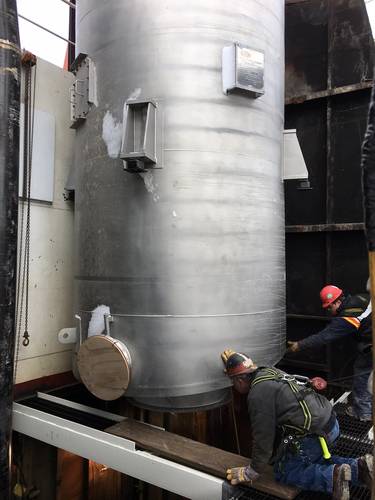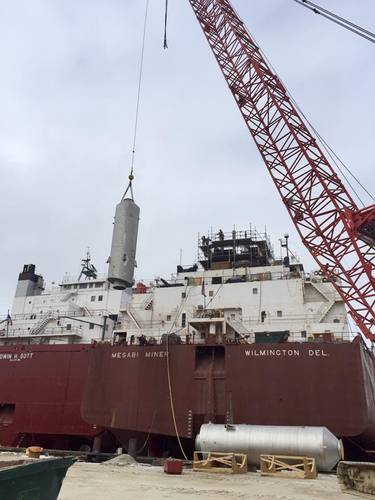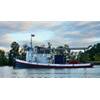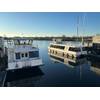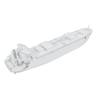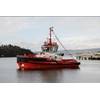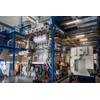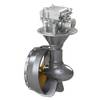The M/V Mesabi Miner has sailed from Fincantieri Bay Shipbuilding Company in Sturgeon Bay, Wis., becoming Interlake Steamship Company’s fourth self-unloading bulk carrier to be outfitted with exhaust gas scrubbers.
Interlake became the first U.S.-flag fleet to test freshwater scrubbers on the Great Lakes in April 2015 after pioneering the emission-reduction technology on its M/V Hon. James L. Oberstar. In 2016, the company outfitted its first thousand foot vessel, the M/V James R. Barker, and its 826-foot M/V Lee A. Tregurtha in its second phase of exhaust gas scrubber implementation.
“We are executing on our long-term vision to be the most efficient and environmentally responsible fleet on the Great Lakes,” said Interlake President Mark W. Barker. “Being able to successfully reduce our emissions and lead the way with this technology has been a major undertaking for us over the last four years. It demonstrates our company’s proud commitment to continuously improve and invest in our ships.”
With the 1,004-foot
Mesabi Miner back in service, Interlake has equipped nearly half of its nine-vessel fleet with scrubber systems implemented specifically to net emission reductions to a level that meets or exceeds North American Emissions Control Area (ECA) requirements.
The Mesabi Miner has been undergoing the retrofit at Fincantieri Bay Shipbuilding since December 2016. The Sturgeon Bay shipyard handled the installation on Interlake’s four vessels which are equipped with the same single-inlet, closed-loop DuPont Marine Scrubbers from Belco Technologies Corp. (BELCO), a DuPont company. The scrubber units, which are attached to the exhaust system of each of the ship’s two engines, effectively strip the majority of sulfur from its stack emissions.
Exhaust gas from the engine is sent through a series of absorption sprays that “wash” and remove impurities, specifically sulfur and particulate matter. That washed exhaust gas then travels through a droplet separator before a signature clean plume of white steam is discharged into the atmosphere.
As the first U.S.-flag fleet to implement the scrubber technology, the company was not only tasked with proving its emission-reduction capability but also taking the lead in developing a sustainable supply-and-delivery infrastructure to support its widespread use on the Great Lakes.
Specifically, the scrubber system relies on an injection of sodium hydroxide – to neutralize and remove sulfur from the exhaust gas – and that chemical has to be delivered to the vessel about twice a month.
Working with partners, Hawkins Inc., PVS Chemicals Inc., Garrow Oil & Propane and OSI Environmental, the company has established waterfront supply capability at Sturgeon Bay, Wis., and Detroit, Mich. Calumet Specialties LLC has become a vital partner and stakeholder in the development of a new supply capability within the Twin Ports of Duluth, Minn., and Superior, Wis. A supply-and-delivery infrastructure is expected to be built out at ports located near East Chicago, Ill., and Burns Harbor, Ind.
A total of five Interlake vessels – including the longest ship on the Great Lakes, the M/V Paul R. Tregurtha – will be outfitted with these types of scrubbers by 2018.
• 





